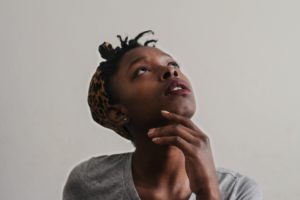Learning Strategies on the Dance Floor
Using strategies to learn Nia choreography
Chances are, you aren’t even aware of how many learning strategies you’re using when you come to a Nia class. You’re learning something, after all, and learning requires the use of at least one (but likely more) strategy – some kind of thought or action that helps you accomplish the learning.
As a Nia instructor, I am using numerous teaching strategies to help you learn effectively, but that’s only part of the equation. YOU are also using techniques to make sense of what I’m sharing. And in doing that, you’re giving your brain some great conditioning!
How do we learn in a Nia class?
A teacher provides verbal cues to share how, where and when to move our bodies. This is pretty effective when the movement is fairly simple.
So for example, if I asked you to do a “front kick” without demonstrating it to you, you’d likely be able to do it accurately just by listening to my words alone.
But what if I then said “now add an elbow strike with a finger flick to the front kick”. Would you be able to do that without me modelling it for you? Maybe, but because the movement has now become more complex, our ability to follow verbal instruction alone decreases. The words may not be sufficient or or delivered quickly enough to capture the subtle and precise details of how that movement might be executed.
One great way to learn is to observe and imitate. If I demonstrated the “front kick-plus-elbow strike-plus-finger flick” combo, it would likely be much easier for you to do. In fact research has shown that teaching via a physical model improves learning more than verbal descriptions alone.
So the combination of words with a physical model is necessary to help us start to learn a dance. But what if we want to dance anything more complicated?
If I asked you to do a “front kick-plus-elbow strike-plus-finger flick” combo 3 times and then on the 4th time change from a front kick to a knee sweep, you’d have to start to develop a “muscle memory” for it.
Interestingly, a “muscle memory” actually has nothing to do with your muscles. Rather “muscle memory” is a form of non-verbal memory that is stored in neural (brain) networks.
How do I develop a muscle memory?
We know that forming a memory for anything involves multiple stages. First we have to perceive what’s to be learned and filter out irrelevancies. Put simply, we have to be paying attention to the
choreography. Easier said than done, especially when our minds drift away from the moment so easily and so often!
Next, we have to convert that sensory experience into something that makes sense.
And here’s where the strategies come in. We can use a variety of strategies to help us start to become more familiar with and learn the choreography.
What kind of strategies will help me learn?
If you’ve been to a Nia class, you’ve no doubt heard me use verbal strategies when teaching. I’ll often name the steps as we do them. In the example above, for each “front kick-plus-elbow strike-plus-finger flick” move we do I might say “kick-elbow-finger”.
You can also use verbal strategies yourself. In other words, talk to yourself! Connecting words to movements engages multiple areas of the brain at the same time which helps with the efficiency of learning.
And, as always in a Nia class, feel free to use verbal strategies your way – your words are more personally meaningful than mine!
You’ve also heard me count out loud – that’s another kind of verbal strategy that is super effective.
Engage your higher level of thinking
Nia choreography is based on a series of katas which are essentially strings of movement patterns. Can you detect patterns in the choreography? Noting those patterns helps with learning, helps us stay present and is a metacognitive strategy – a way of “thinking about thinking” that is powerfully effective.
But I don’t want to “think” in a Nia class!
I know, I know. We come to Nia for a physical experience, and it’s true, we don’t want to get too “in our heads” in a class. However, believe it or not, every time you come to a Nia class you are not only getting a physical fitness experience, but you are also doing some serious brain training. Dancing is SO GOOD for your brain!
I feel that using learning strategies in class can not only enhance the brain benefits of Nia, but they are also a good way to stay in the moment and not drift off into our to-do list or sink into our worries.
So, whattya think? Do you think you might give some of these strategies a try? And if you already use these or other learning strategies in class, tell me about it!


